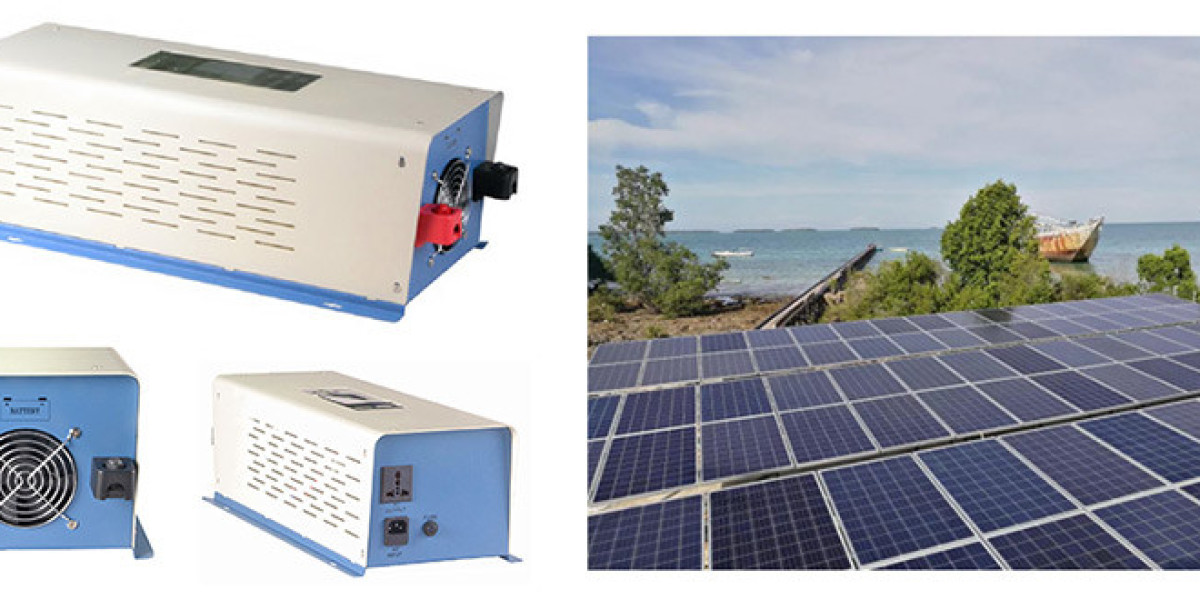The solar PV inverters market plays a pivotal role in the global transition towards renewable energy. Solar photovoltaic (PV) inverters are essential components that convert direct current (DC) generated by solar panels into alternating current (AC) usable by electrical grids and end consumers. The market scenario for solar PV inverters is shaped by growing investments in solar energy projects, declining costs of solar panels, and rising environmental awareness.
This article delves into the key aspects defining the current market landscape, including technological trends, regional dynamics, demand drivers, and prevailing challenges impacting growth.
Rising Demand Driven by Renewable Energy Expansion
The primary factor influencing the solar PV inverters market scenario is the surge in global solar energy adoption. Governments worldwide are implementing policies and incentives to encourage solar installations in residential, commercial, and utility-scale segments. These initiatives accelerate demand for efficient and reliable PV inverters.
With solar capacity installations reaching new highs every year, inverter manufacturers are witnessing increased order volumes and expanding customer bases. The integration of solar power into smart grids and microgrids further fuels the need for advanced inverter solutions capable of handling complex energy flows.
Technological Advancements Shaping Market Evolution
Technological innovation remains a cornerstone of the solar PV inverters market. Manufacturers are focusing on improving inverter efficiency, reliability, and functionalities. Recent developments include:
String inverters with enhanced monitoring capabilities enable better performance tracking and fault detection.
Central inverters designed for utility-scale projects continue to grow in power rating and efficiency.
Hybrid inverters combining solar generation with battery storage support energy resilience and grid stability.
The adoption of smart inverters capable of supporting grid services such as voltage regulation and frequency control.
These innovations allow solar PV systems to better integrate with evolving power grids, improving overall energy management and reducing operational costs.
Regional Market Dynamics and Growth Hotspots
The solar PV inverters market scenario varies considerably across regions due to differing solar potentials, policy frameworks, and economic conditions.
Asia-Pacific dominates the market, led by China, India, Japan, and South Korea, where extensive solar capacity expansions are underway. Supportive government policies and declining solar equipment prices drive market growth.
Europe continues to invest heavily in solar installations with emphasis on grid modernization and sustainability targets. Countries like Germany, Spain, and Italy are leading adoption of smart inverter technologies.
North America, particularly the U.S., is witnessing strong growth due to state-level renewable portfolio standards, tax incentives, and increasing corporate commitments to clean energy.
Emerging markets in Latin America, the Middle East, and Africa show potential, though infrastructure and financing remain challenges.
Each region presents unique opportunities and constraints influencing inverter technology preferences and market penetration.
Challenges Impacting Market Development
Despite positive growth prospects, the solar PV inverters market scenario faces several challenges:
Price pressure from commoditization of inverter products forces manufacturers to innovate while maintaining competitive pricing.
Grid integration complexities especially in regions with outdated infrastructure limit the seamless deployment of advanced inverters.
Supply chain disruptions affect component availability, impacting production schedules.
Technical barriers such as harmonizing inverter functions with diverse grid codes pose ongoing challenges.
Limited awareness and financing hurdles in emerging markets slow adoption rates.
Addressing these issues is crucial for sustaining growth and meeting escalating global solar energy targets.
Competitive Landscape and Market Strategies
The solar PV inverters market is highly competitive, featuring established multinational corporations and emerging regional players. Companies compete on technology, pricing, service quality, and geographic reach.
Key strategies include:
Expanding product portfolios to include hybrid and smart inverters.
Investing in R&D to enhance efficiency and grid compatibility.
Forming partnerships with solar developers and utilities to capture larger market share.
Enhancing after-sales support and digital services for system monitoring.
These strategies help manufacturers differentiate in a crowded market and align with evolving customer demands.
Future Outlook and Emerging Trends
Looking ahead, the solar PV inverters market scenario is expected to benefit from:
Rising battery storage adoption, driving demand for hybrid inverter solutions.
Increased electrification and digitalization of power grids requiring intelligent inverter functions.
Enhanced government mandates on renewable energy penetration and grid modernization.
Growing interest in decentralized energy systems and microgrids, expanding inverter applications.
Continuous technological improvements and supportive regulatory environments will be key to unlocking the market’s full potential over the coming decade.
Conclusion: A Market Poised for Sustained Growth and Innovation
The solar PV inverters market scenario presents a dynamic landscape shaped by rapid renewable energy adoption, evolving grid requirements, and continuous technological progress. While challenges such as pricing pressures and grid integration persist, ongoing innovations and supportive policies are driving robust growth.
Manufacturers who invest in smart, efficient, and flexible inverter technologies, while navigating regional market nuances, will be well-positioned to capitalize on the expanding global solar energy ecosystem. The future of solar PV inverters is bright, playing a central role in the worldwide shift towards sustainable energy.








